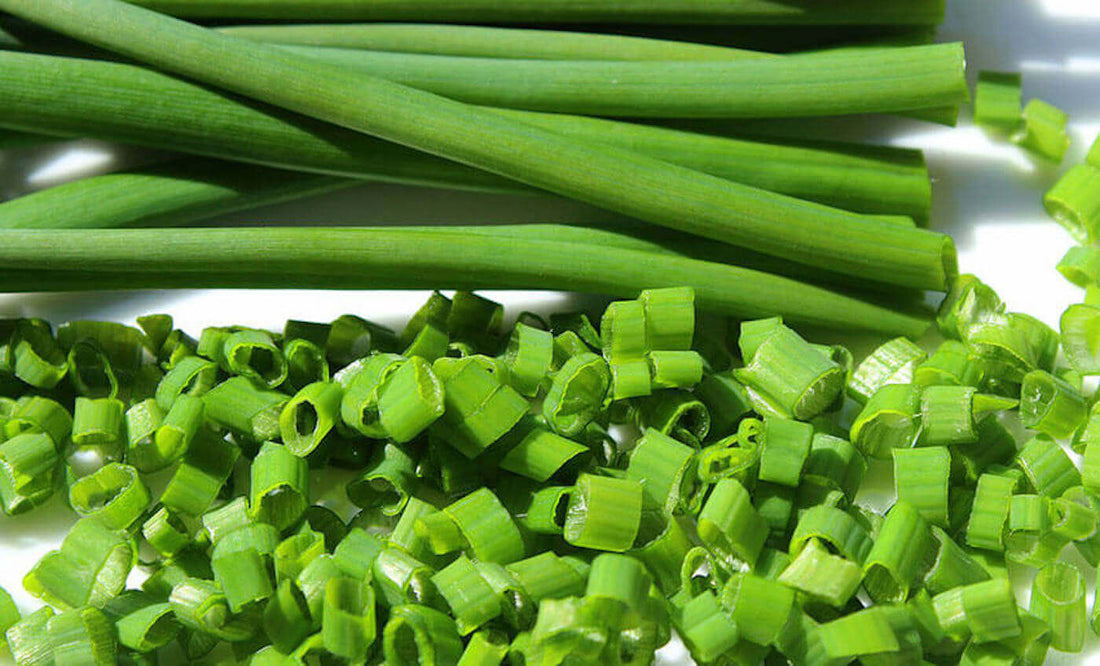
How to Grow Chives from Seed
Chives (Allium schoenoprasum) are a versatile and low-maintenance herb, perfect for beginners and seasoned gardeners alike. Their mild onion-like flavour makes them a popular choice for garnishing and cooking, while their attractive purple flowers provide a decorative touch to any garden. This guide covers every step of growing chives successfully in the UK.
Introduction to Growing Chives from Seed
Chives belong to the allium family, which includes onions, garlic, and leeks. As a perennial herb, they grow back each year, making them a valuable and sustainable addition to your herb garden. Chives thrive in the UK's climate, tolerating cool conditions and requiring minimal care. They can be grown in garden beds, containers, or even window boxes, making them ideal for urban and rural gardeners alike.
Choosing the Right Variety
There are two main types of chives suitable for growing in the UK:
- Common Chives (Allium schoenoprasum): Known for their slender, green leaves and mild onion flavour, these are the most popular variety for culinary use.
- Garlic Chives (Allium tuberosum): These have broader, flatter leaves and a subtle garlic flavour. They are equally easy to grow and add a unique twist to recipes.
Choose a variety based on your culinary preferences, or grow both for variety in your kitchen.
Preparing the Growing Area
Chives prefer well-drained soil and a sunny location but can also tolerate partial shade. They are not particularly fussy about soil type, making them an adaptable herb.
- Soil Preparation: Loosen the soil to a depth of 20 cm and work in organic matter such as well-rotted compost or manure. This improves drainage and provides essential nutrients.
- pH Level: Aim for a neutral to slightly alkaline soil pH of 6.0-7.0. Test your soil and amend it if necessary with lime to raise the pH or sulphur to lower it.
- Container Growing: If growing in pots, use a high-quality multipurpose compost and ensure the container has good drainage holes.
Chives are excellent companion plants, deterring pests like aphids. Consider planting them near carrots, tomatoes, or roses for mutual benefits.
Sowing and Planting Chives
Chives can be grown from seed, but many gardeners prefer starting with young plants or dividing established clumps for quicker results.
Growing from Seed
- When to Sow: Start seeds indoors in February or March, or sow directly outdoors from April to June.
- Indoor Sowing: Fill seed trays with moist compost and scatter seeds thinly. Cover with a light layer of compost, water gently, and place on a sunny windowsill or in a propagator. Germination typically takes 14-21 days.
- Outdoor Sowing: Prepare the soil as described above. Sow seeds thinly in shallow drills (about 1 cm deep) and cover with soil. Water lightly.
- Transplanting: Once seedlings are 10-15 cm tall, harden them off by placing them outside during the day for a week. Transplant them into the garden, spacing plants 20-30 cm apart.
Dividing Established Plants
If you have access to a mature chive plant, you can divide it in early spring or autumn:
- Lift the clump gently with a garden fork.
- Separate it into smaller sections, each with roots attached.
- Replant divisions at the same depth as the original plant.
Caring for Chives
Chives are hardy and require minimal maintenance once established.
- Watering: Keep the soil consistently moist but not waterlogged, particularly during dry spells.
- Feeding: Apply a balanced liquid fertiliser once a month during the growing season to encourage lush growth. Avoid overfeeding, as this can lead to weaker flavour.
- Mulching: Apply a layer of mulch around the plants to retain moisture and suppress weeds.
- Pruning: Trim the leaves regularly to encourage fresh growth. Remove flower heads once they fade to prevent the plant from diverting energy into seed production.
Harvesting Chives
Chives can be harvested as soon as the leaves are large enough to use, typically 8-10 weeks after sowing.
- How to Harvest: Use scissors to cut leaves about 2.5 cm above the base. Avoid cutting all the leaves at once to allow the plant to recover and continue growing.
- Frequency: Regular harvesting promotes continuous growth. Aim to trim leaves every few weeks during the growing season.
- Edible Flowers: Chive flowers are not only decorative but also edible. Harvest them just before they fully open and use them to garnish salads, soups, or butter.
Pests and Diseases
Chives are relatively pest-resistant but can occasionally face issues.
- Aphids: These can cluster on leaves and flower stems. Wash them off with a strong jet of water or use a homemade garlic spray.
- Rust: This fungal disease appears as orange spots on leaves. Remove affected foliage and avoid overhead watering to prevent its spread.
- Onion Fly: Though rare, onion flies can damage chives. Use netting to protect plants, especially in areas prone to infestation.
Companion planting with marigolds or garlic can help deter pests naturally.
Overwintering Chives
Chives are hardy perennials and can survive UK winters with minimal care.
- Garden Plants: Cut back foliage in late autumn and apply a layer of mulch to protect the roots from frost.
- Container Plants: Move pots to a sheltered location, such as a greenhouse or porch, to shield them from extreme cold.
- Extending Harvests: For fresh chives in winter, pot up a few clumps in late autumn and grow them indoors on a sunny windowsill.
Propagating Chives
To expand your chive garden, divide established plants every 2-3 years in spring or autumn. This not only provides more plants but also rejuvenates older clumps.
Frequently Asked Questions
Q: Can I grow chives indoors?
A: Yes, chives thrive in pots on sunny windowsills. Use a pot with good drainage and water regularly to keep the soil moist.
Q: How long do chives take to grow?
A: From seed, chives take about 8-10 weeks to produce harvestable leaves. Mature plants provide a continuous harvest throughout the growing season.
Q: Do chives attract bees?
A: Yes, chive flowers are highly attractive to bees and other pollinators, making them a great addition to wildlife-friendly gardens.
Summary and Additional Resources
Chives are an easy-to-grow herb that adds beauty and flavour to any garden. To recap:
- Choose a sunny spot with well-drained soil or a container with good drainage.
- Sow seeds in spring or divide existing plants for quicker results.
- Harvest leaves regularly to encourage fresh growth and enjoy the edible flowers.
- Protect plants from pests and rejuvenate clumps every few years.
For further guidance, visit the Royal Horticultural Society’s website or consult books like Herbs: The Complete Gardener's Guide by Patrick Lima. With a little effort, you can enjoy a steady supply of fresh, flavourful chives year-round!
